Marion Downs, Acclaimed As “Mother of Pediatric Audiology,” Dies At 100
Reprinted with permission from HearingHealthMatters.org
Marion Downs, the beloved and revered audiologist who largely invented the field of pediatric audiology, died on November 13 in her native Minnesota, 10 months after her 100th birthday.
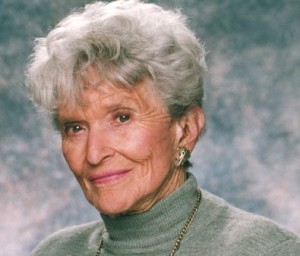
Dr. Downs’s trailblazing work, starting in the early 1960s at the University of Colorado School of Medicine (UC School of Medicine), showed the world that babies with hearing loss could be and should be treated for the condition and fitted with hearing aids as young as possible. Her findings not only revolutionized the care of childhood hearing loss, but also inspired the movement that has made universal newborn hearing screening the standard throughout the U.S. and much of the rest of the world.
News of Marion Downs’s passing quickly spread throughout the audiology community, as Jerry Northern, PhD, her longtime colleague at the UC Medical Center, co-author, and close friend, e-mailed the sad news to hundreds of those who knew and admired her.
He wrote, “She leaves a legacy that will forever be remembered for her many, many contributions to the field of audiology, the amazing influence she had on so many of us, and the countless children and adults who benefited from her clinical acumen. She lived a full and vibrant life, accomplished so much and made so many friends. She will be missed–but not forgotten.”
In response to Northern’s message, scores of tributes to the “Mother of Pediatric Audiology” flowed in, some of which appear at the end of this post.
AN ACCIDENTAL AUDIOLOGIST
As Marion Downs enjoyed recalling (and as Robert Traynor, EdD, wrote about in a tribute on this blog to his former teacher), it was a matter of sheer chance that she ever entered audiology.
Born in New Ulm, MN, on January 26, 1914, Marion Pfaender grew up there and was valedictorian of her high school class. She went on to the University of Minnesota, where she was elected to Phi Beta Kappa in her junior year in 1934. But like many young women of that era, she left school before graduating to marry. She and her husband, George Downs, moved to Colorado, where she focused on raising their three children.
In 1948, at age 34 she felt it was time to venture forth beyond the life of wife and mother. She completed her undergraduate course requirements at the University of Colorado and received a BA in political science and English from University of Minnesota.
She then decided to pursue a career of some kind. The University of Denver was registering students for graduate school, so she went there only to find thousands of people signing up for various programs. The lines were very long for the areas that her education might have prepared her for, so, she said, she picked the shortest line—that for Speech Pathology and Audiology. The rest, as they say, is history.
A DISTINGUISHED CAREER
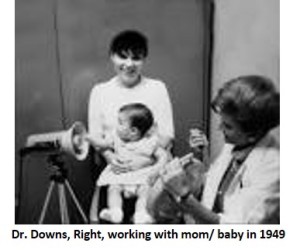 After earning her master’s degree in audiology in 1951, she immediately joined the from the University of Denver faculty, where she taught audiology and directed the audiology clinic for eight years. In 1959, she moved to the University of Colorado School of Medicine to work as an audiologist at its new otolaryngology clinic. She remained there until retiring in 1982.
After earning her master’s degree in audiology in 1951, she immediately joined the from the University of Denver faculty, where she taught audiology and directed the audiology clinic for eight years. In 1959, she moved to the University of Colorado School of Medicine to work as an audiologist at its new otolaryngology clinic. She remained there until retiring in 1982.
It was at the UC School of Medicine that she and her colleague Doreen Pollack began to defy the conventional wisdom of the time by fitting hearing aids on infants as young as 6 months of age. They believed, as was subsequently proven, that the earlier treatment of hearing loss began, the more successful it would be. Back in the 1960s, children usually did not get hearing aids before age 3 or 4. Marion Downs also developed a more effective way of testing newborns’ hearing.
Along with her clinical work, she worked tirelessly for more than 30 years to convince her 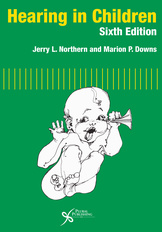 peers to adopt her newborn test in hospitals and to fit hearing aids on infants as soon as possible. These efforts have had a profound effect on the lives of countless children.
peers to adopt her newborn test in hospitals and to fit hearing aids on infants as soon as possible. These efforts have had a profound effect on the lives of countless children.
Marion Downs co-authored two of the classic texts in pediatric audiology. One was the best-selling Hearing in Children, which she wrote with Jerry Northern, her colleague of over 50 years and one of audiology’s leading lights. It has been published in six editions and translated into several languages. Auditory Disorders in School Children, co-authored with Ross Roeser, PhD, another prominent audiologist, is in its fourth edition.
A FINAL HIGHLIGHT
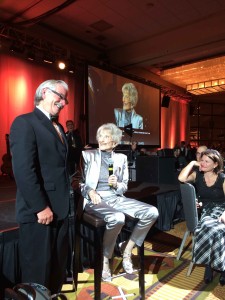
One more time: Jerry Northern and Marion Downs at her 100th birthday celebration
The final highlight in the remarkable life of Marion Downs came early this year when more than 600 friends and admirers gathered in Denver to join her as she celebrated her 100th birthday. The January 26 event recognized the tremendous positive impact of her work, while also raising funds to support the new Marion Downs Hearing Center, which will be built on the medical campus of the University of Colorado in Aurora.
Jerry Northern, who was master of ceremonies, wrote about the celebration for this blog.
MANY HONORS
Marion Downs received many awards and honors for her professional achievements, which continued long after her official retirement. In 2005, the University of Colorado Medical Center named the Marion Downs Hearing Center after her.
In 2007 the U.S. Department of Health and Human Services gave her the Secretary’s Highest Recognition Award for her groundbreaking work in promoting the early identification of hearing problems in children.
She held honorary doctorates from both the University of Colorado and the University of Northern Colorado.
Among the professional organizations that honored her were the American Academy of Audiology (AAA), the American Speech-Language-Hearing Association, the American Auditory Society, the American Academy of Otolaryngology-Head and Neck Surgery, the American Medical Association, and the International Audiology Society.
She also received awards from the University of Minnesota and from the Ministry of Health of South Vietnam, for teaching audiology in that country.
WITH MARION, IT WAS PERSONAL
Had Marion Downs been only an audiologist whose work re-shaped how children with hearing loss are cared for and who inspired an international movement to mandate newborn hearing screening, she would be a greatly respected figure. But the vast outpouring of love and affection that her death has brought forth is largely a tribute to the person she was.
Anyone who met Marion–and I’m sure a great many reading did—remembers a woman of wit and charm, beauty and intelligence, and, most of all, warmth and enthusiasm. When audiologists and students at conventions and other gatherings flocked around her, as they invariably did, she seemed to enjoy their company and conversation as much as they did hers. She treated everyone as an equal, a friend, someone deserving of her attention.
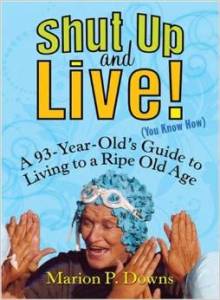
She was also amazing in areas that had nothing to with her profession. She learned to ski at the age of 50, and within a year could handle Black Diamond trails. She was still hitting the slopes regularly well into her 90s. She also played tennis to an advanced age, well enough to win five gold medals in the Senior Olympics. She completed a triathlon at age 89, then celebrated her 90th birthday by skydiving from a plane. She also found time to travel the world and be an engaged grandmother of 20.
How did she do all this? So many people asked Marion that at the age of 93, she gave her answer in the title and the text of her final book, Shut Up and Live!
AUDIOLOGISTS RECALL AN UNFORGETTABLE FIGURE
Jerry Northern’s message about the passing of Marion Downs inspired a flood of tributes and fond remembrances. Here are a few of them.
Carol Flexer, PhD, a distinguished pediatric audiologist at the University of Akron, wrote, “Marion’s influence cannot be overstated. She changed the world for children with hearing loss and their families. Marion personally inspired several generations of audiologists, and future professionals and families will be positively influenced by her legacy.”
Jay Hall, PhD, long a prominent professor of audiology, said, “I refer to Marion as ‘my audiology mother’ when giving lectures and teaching classes. She had hundreds of audiology ‘children’ who, like me, were inspired by her spirit and total dedication to our field and the patients we serve.”
Jane R. Madell, PhD, a leading pediatric audiologist in private practice and an editor at HearingHealthMatters.org, recalled a humorous story about Dr. Downs: “Years ago, Marion told me that I was getting old and needed to be sure I passed on what I knew to the next generation of audiologists. I laughed, considering how much older she was than me, but she did push me to write my textbooks. We were all very lucky to have known her.”
Erin L. Miller, AuD, president of the American Academy of Audiology, said, “Marion had such an influence. We are blessed that her spirit lives on in so many audiologists.”
Jeffrey L. Danhauer, PhD, chair of audiology at the University of California, Santa Barbara, said, “Few humans ever leave such a positive mark on the world. Marion loved all and all loved her. Every baby ever tested bears her imprint. She left a legacy that will live on, as she will, in all of us forever.”
For more tributes, visit the Marion Downs Center.

